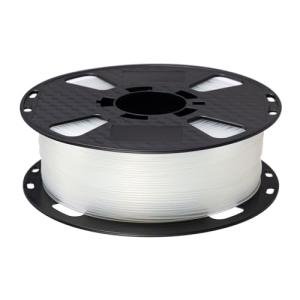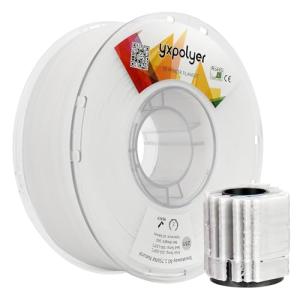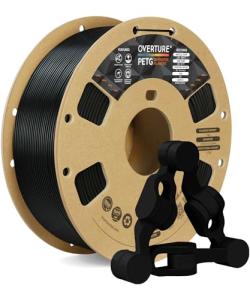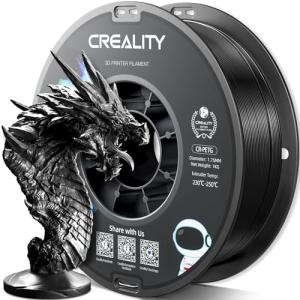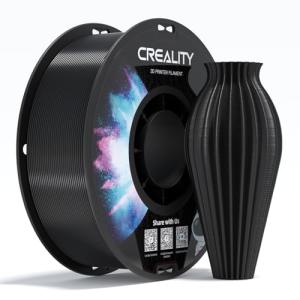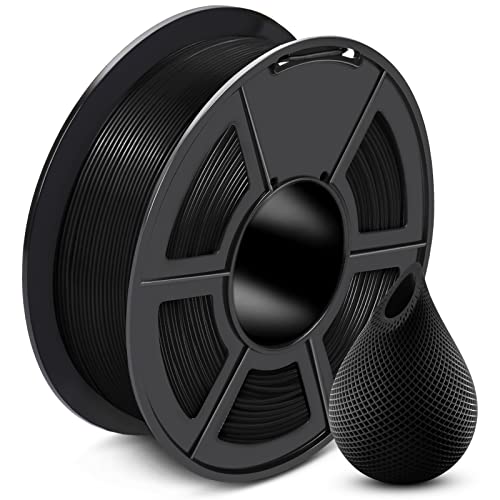PLA is a favorite for beginners. It's super easy to print with and is available in a bunch of colors. The best part? It's made from cornstarch, so it's biodegradable and has a sweet smell while it prints. If you're looking for something that's easy to handle and gives great results, PLA is your go-to.
Now, if you need something tougher, PETG might be your answer. This material is strong, flexible, and resistant to moisture, making it perfect for functional parts. Plus, it won't warp much during printing, so you won’t have to stress over your creations warping out of shape.
Finally, there’s ABS, which has been around forever. It’s durable and can handle high temperatures, but it does require a heated bed for the best results. If you want to make items that need to withstand a bit of heat or impact, ABS is worth a shot. Just use it in a well-ventilated area because the fumes can be a little funky.
So, think about what you need your print to do. Are you after something simple, durable, or heat-resistant? The right 3D printing material can make all the difference, and with a little research, you’ll nail it! Happy printing!
Popular 3D Printing Materials Explained
When diving into the world of 3D printing, picking the right 3D printing material can make all the difference. Each material comes with its own set of characteristics, so let’s break down some of the most popular ones.
PLA (Polylactic Acid) is a fan favorite, especially for beginners. It’s made from corn starch, so it's biodegradable and eco-friendly. PLA is super easy to print with, offers vibrant colors, and works great for detailed models and prototypes. Just keep in mind it isn't the best for items that need to withstand heat, as it can get soft at higher temperatures.
ABS (Acrylonitrile Butadiene Styrene) is a go-to for more durable prints. It’s stronger than PLA and can handle warmer environments better. You’ll often find ABS in toys, car parts, and all sorts of everyday objects. It does need a bit more finesse when printing, so be ready for possible warping without proper bed adhesion.
PETG (Polyethylene Terephthalate Glycol) is another popular choice. It combines the best of both PLA and ABS. It's tough, flexible, and resistant to moisture. If you’re looking for something that’s durable yet easy to work with, PETG could be your new best friend. Plus, it’s food-safe, so you can even use it for kitchen items!
Nylon offers incredible strength and flexibility. It's perfect for functional parts that need to take some wear and tear. Nylon is a little trickier to print with since it can absorb moisture from the air. Make sure to store your filament properly to keep it in top shape.
Clear TPU Filament 1.75mm, 1KG Flexible Material
Print stunning, flexible designs with this easy-to-use clear TPU filament
Product information
$22.99
Product Review Score
4.09 out of 5 stars
131 reviewsProduct links
Tips for Selecting Materials for Your Project
Picking the right 3D printing material can really make or break your project. Each type of material has its strengths and weaknesses, so it’s important to consider what you need. Think about the final use of your printed object: is it for display, functional, or maybe for a prototype? Your answers will guide you in choosing the best 3D printing material.
Let’s start with the most common choice: PLA. It’s great for beginners since it’s super easy to work with and prints well on most printers. PLA is biodegradable, too! If you’re making something that’s just for show and doesn’t need to be super tough, PLA might be your go-to. Just remember, it’s not the best for high-temperature situations.
If you need something tougher, consider ABS. This material can handle impact better than PLA and is perfect for functional parts. It’s used a lot in making toys and household items. Just a heads up: ABS can be a bit tricky to print because it warps if not kept at the right temperature. So make sure your printer has a heated bed.
Don’t forget about specialty materials! Need flexibility? Try TPU. Want something that looks like metal? Check out PETG or nylon for strength and durability. Always check the compatibility of your 3D printer with these materials because not all printers can handle every type of 3D printing material. Doing your homework pays off in the end!
Finally, think about finishing touches. Some materials paint or sand easier than others. Your project might need a smooth finish for aesthetics, or maybe you want to make it waterproof. Research the properties of different 3D printing materials before you decide. It’ll save you a lot of time and headaches in your printing journey!
Breakaway Support Filament 1kg for Easy 3D Printing
Simplify your 3D printing projects with this lightweight and removable support filament
Product information
$29.99
Product Review Score
4.91 out of 5 stars
85 reviewsProduct links
Understanding Material Properties and Uses
When it comes to choosing the right 3D Printing Material, understanding what each type offers can save you a lot of headaches down the line. Different materials have unique properties that make them suitable for specific applications. Whether you're looking for strength, flexibility, or something that looks fantastic, knowing the ins and outs of each option is key.
For starters, PLA is a popular go-to for beginners. It’s made from renewable resources, so it’s eco-friendly! PLA prints easily and gives you a smooth finish, perfect for models, prototypes, and non-functional parts. But keep in mind, it’s not the strongest option out there. If you’re planning to use your print for something that requires durability, you might want to consider other materials.
Then there’s ABS, known for its toughness. This material is rugged and stands up well to higher temperatures. It’s great for creating working parts like brackets or fixtures. However, it can be a bit trickier to print with compared to PLA. You’ll want to use a heated bed and ensure good ventilation since the fumes can be a little strong during the printing process.
If you need something with flexibility, TPU is your friend. This rubber-like material can bend and stretch, making it ideal for things like phone cases or wearable items that need to be comfortable yet sturdy. It's definitely worth considering if your project needs a little give without sacrificing too much strength.
Lastly, there’s PETG, a hybrid that combines the best of both worlds—strength and ease of printing. PETG is less brittle than PLA and more user-friendly than ABS. It’s perfect for functional parts and even food-safe applications. Whichever 3D Printing Material you choose, knowing their properties will help you create awesome prints that meet your needs.
